Least Damaging Hair Extensions
Jump To:
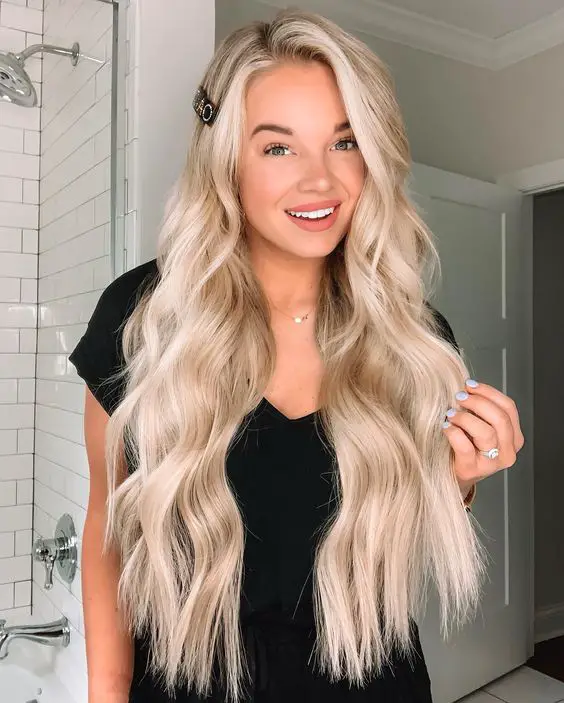
Hair extensions can transform your hair from the root to the tip. You can use extensions to increase your confidence and add more density to your hair. Extensions are a popular way to solve hair problems. Temporary extensions and permanent extensions are available. You can remove temporary extensions at the end of each day, and permanent ones are fused in the hair using glue or sewing techniques in a hair salon.
Extensions can cause hair damage, so many people are afraid of them. Hair extensions won’t cause hair damage if installed by a licensed, trained professional. However, you will need to choose the right kind for you.
What hair extensions are the most damaging?
They don’t create tension at the roots, and they can be adjusted to your hair type and texture. Clip-ins are temporary extensions that don’t nag and can be easily removed. Your hairstyle and texture are important factors to consider when choosing extensions. Hair extensions are a complicated service that requires regular maintenance.
Best Non-Damaging Hair Extensions
Always have hair extensions installed by licensed hairstylists in a salon setting. This may seem overwhelming to some, especially if you are new to the entire process.
Extensions don’t have to ruin your hair. Extensions shouldn’t cause damage to your natural hair, provided they are correctly installed and maintained with care. There are also lower-maintenance options.
These extensions are easy to set up and maintain, making them ideal for newcomers to extension. It is amazing how many factors you need to consider before deciding on hair extensions. You’ll be more comfortable understanding extensions once you have a basic extension such as clip-ins.
Clip-Ins
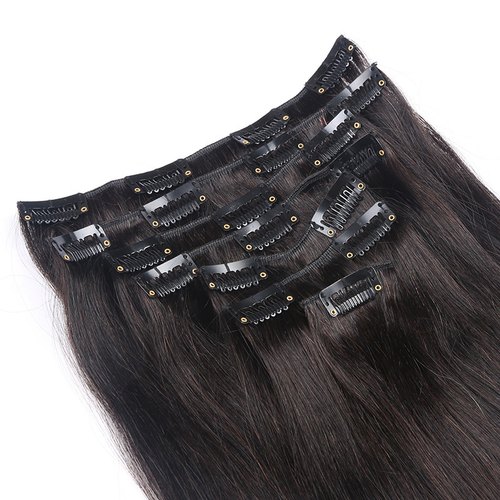
- Clip-ins are the most accessible hair extensions and are very easy to apply.
- These are precisely what they sound like. Clip-ins attach a strip of hair to a clip you can place anywhere on the head to increase length, density, or volume.
- Clip-ins can also be called temporary hair extensions. They can cause hair damage if worn incorrectly.
- Clip-ins that are too heavy for hair or your head can cause tension, tenderness, or breakage. Clip-ins shouldn’t feel heavy or uncomfortable.
- To avoid pulling or snagging, make sure you read and follow the manufacturer’s instructions. You can attach clip-ins to your hair in minutes. At night, you can unclip the extensions to remove them seamlessly.
- A clip-in can be purchased for any occasion. You can also get a ponytail extension if you desire a long ponytail. Bangs might be a better option. Clip-in bangs are also available.
Tape-Ins
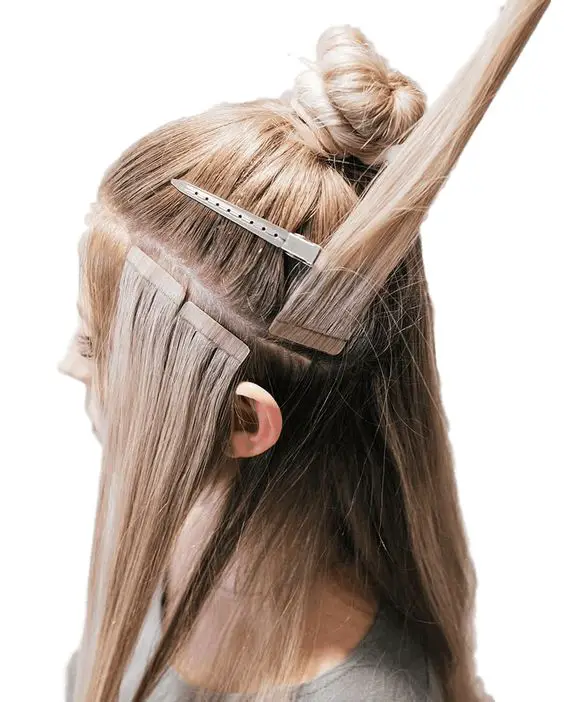 A professional hairdresser can only install tape-ins in a salon. Tape-ins are not removed every night like clip-ins. Instead, you have them professionally cleaned at the salon once a week.
A professional hairdresser can only install tape-ins in a salon. Tape-ins are not removed every night like clip-ins. Instead, you have them professionally cleaned at the salon once a week.- There is also an adhesive to ensure that permanent hair extensions stay in place. Extensions can be challenging to remove at home if they aren’t correct.
- Tape-ins have a double-sided adhesive that sticks to the hair strand. However, glues, tapes, and sealants can cause hair loss and may be intimating. The adhesive for tape-in extensions is a bit different.
- Tape-in adhesive is made to fit around hair and can easily be removed using a tape remover that won’t cause excessive breakage. Tape-in adhesive is flexible enough to mold with your natural hair and head.
- Tape-ins are suitable for all hair types and textures. As with any extension, incorrect adhesive removal, carelessness, or improper installation can all affect the health of your natural hair.
- It is important to have permanent extensions installed by a professional.
- Tape-ins should also be measured to ensure they are the right fit for your hair.
Wefts/Sew-Ins
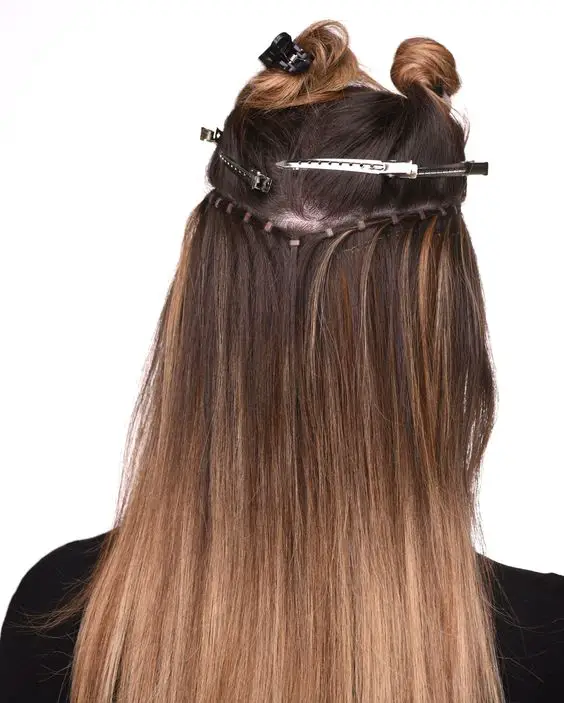
- Wefts can be used to extend hair without causing damage.
- Because they can be made into any extension, wefts have a lot of versatility. They are versatile because they can be made into an extension.
- Sew-ins are better than clip-ins because wefts tend to be heavier and larger than clip-ins. Sew-ins require a braid to create the area where the extensions will be placed. Then, the hair weft must be sewn into this braid.
- Because the weft is sewn into the natural hair, it causes less tension. Wefts work well for natural hair types with medium to thick, coarse, or textured hair.
- The installation, removal, and maintenance of extensions will affect how long they last. The braid used for the base may feel too tight.
How to Choose the Right Extensions?
It is crucial to determine which type of hair extension you need before installing them in your hair. There are many reasons to choose the best extension. The right fit and type will help reduce damage.
- Before you install hair extensions, consider your lifestyle and hair texture. Your lifestyle should reflect your hairstyle.
- You should also evaluate the condition of your hair. Choosing an extension that matches your hair texture and density is essential. You won’t need a thick weft if you have fine, thin hair.
- As a rule of thumb, you can pick based on the texture and density of your hair. The best results are always achieved by visiting a salon to be fitted by licensed stylists.
Your stylist might be able to customize extensions to meet your specific needs. A professional extension installation will not cause damage or breakage. However, you must take proper care of them before your next appointment.
Hair Extensions For Fine Hair

- Fine hair can be difficult to manage when it comes to installing extensions. Fine hair may have lesser density or be thin. Because there is not much to work with, it will be difficult for extensions to be hidden at the roots.
- Fine hair can also have a high density. If your hair is fine but has lots of hair, extensions may be easier to hide. You can use extensions to add volume and depth to fine hair.
- Clip-ins can be used as a temporary solution. You can match them to your hair and then remove them quickly. This is an excellent way for you to test out permanent solutions. Tape-ins don’t add tension and are great.
Hair Extensions For Medium Hair
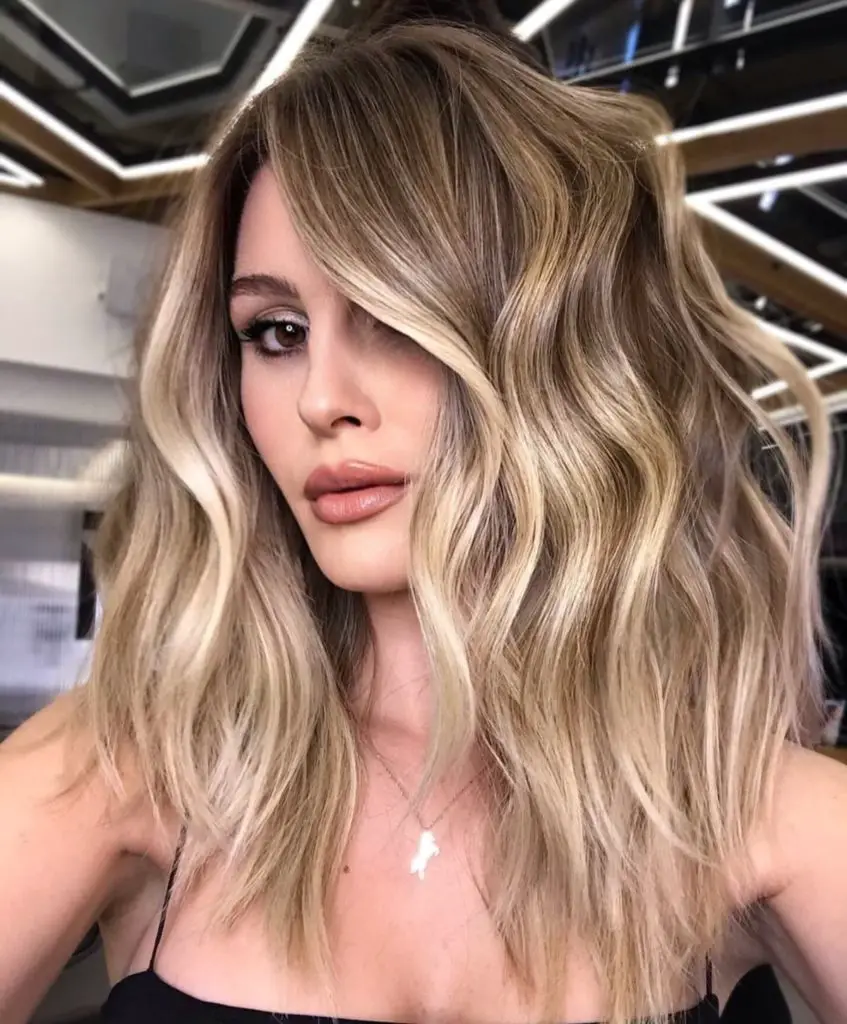
- You can consider adding many extensions to your hair if you have medium texture or density. This hair type can handle almost any type of extension. You can experiment to find the best one for you.
- Sew-ins are possible for medium hair. Tape-ins can be used to flatter any hair type and give you extra volume or length in the most needed areas.
- Clip-ins, as always, is a temporary, easy solution that lets you be creative with extensions without breaking the bank.
Hair Extensions For Thick hair
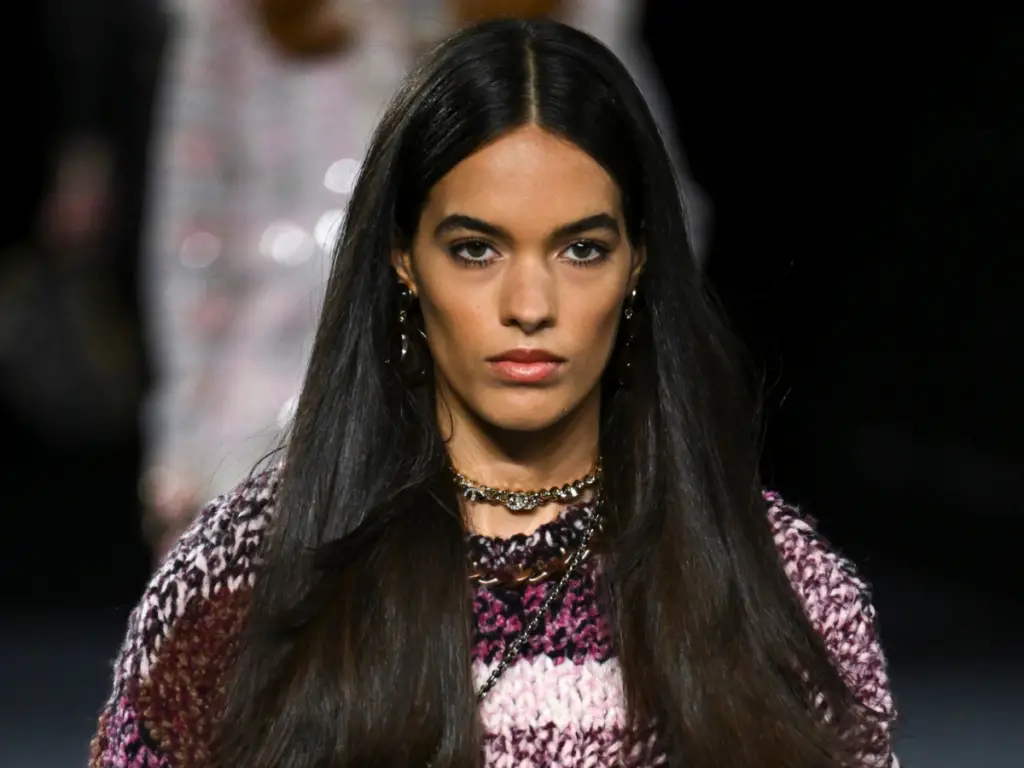
- A weft is a great choice for thick hair, whether curly, coarse, or coily. You can also make your wefts permanent or clip-ins.
- You can create a contrast with thick hair by using wefts. It’s also great for adding length to your hair.
Talk to Your Stylist
You can choose from many different types of extensions and the ones mentioned above. Consult a stylist if you are unsure which type of extensions will work best for your hair.
- A stylish can suggest other options that will suit your hair and lifestyle.
- You’ll also get the right extension for you, and it will fit perfectly so that your hair doesn’t break, become damaged, or become tense.
- You can prevent extensions from causing damage to your hair by doing some maintenance at home.
How to maintain your extensions to prevent damage?
- Properly Wash Extensions
- Never sleep with wet extensions
- Always brush extensions with care.
- Get a Weekly Conditioning Treatment.
- Minimize Heat Damage.
- Avoid tangling while you sleep
- Separate the Bonds Daily.
Your hair care habits can determine whether extensions break. You risk reducing the life expectancy of your hair extensions if you don’t follow a good hair care routine. The stylist who installed your permanent extensions will give you some guidelines about maintaining them. The type of extension you select and the unique characteristics of your hair in a different way.
We hope this article on Least Damaging Hair Extensions helped you pick the right kind of hair extensions for your hair without causing it a lot of damage.
What is the least damaging type of hair extension?
Clip-in hair extensions are the most damaging. The clip-in hair extension is temporary and attaches the strands to the hair with small clips. Clip-ins can be worn to important events or whenever you wish to change your appearance.
What are the least damaging permanent hair extensions?
Clip-in extensions are the most damaging, but they don’t last forever. They also give your hair some time to relax from excessive styling. Tape-in extensions provide a natural look and blend with your hair better than micro-ring extensions.
What is the healthiest form of hair extensions?
Tape-in Extensions:
- This is the most secure method of hair extension available. The weight of the panels is distributed over a greater area, resulting in no damage to the client’s hair.
- Using tape-in extensions is the fastest way to apply hair. It is reusable and can be worn for 6-8 weeks after each application. This fits into your salon visit schedule.
What is the safest form of extensions?
Halo hair extensions are safest for all hair types. This type won’t attach to hair so it’s not likely to pull or snag your hair. It can be worn over your crown and camouflaged with your natural hair.
What are the worst hair extensions for your hair?
Braided weft hair extensions, Glue-in tracks, and keratin fuse extensions. This is why they are the worst way to add hair. They are sewn to your natural hair, which is then braided to cover the entire head. The wefts of hair are then sewn into the braided rows.
Do Nano extensions ruin your hair?
When fitted by a professional, nano ring hair extensions do not cause damage to natural hair. They are actually one of the most damaging hair extensions. They don’t require heat or glue to attach them, so they are gentler and more gentle on hair.
Do micro ring extensions ruin your hair?
When properly fitted by a professional hair extension technician, micro ring hair extensions will not cause any damage. Micro-ring hair extensions do not cause hair damage because they don’t use glue or other harsh chemicals to create bonds between the extension hair and the natural hair.
Do hand-tied extensions ruin your hair?
Hand-tied wefts won’t damage your hair. These are not machine wefts, which may be thicker and thus heavier. They can pull the hair down in a way that hand-tied weaves cannot.
Do hair extensions help hair grow?
Unfortunately, hair extensions won’t help your hair grow. We would love it if they could, however. A healthy lifestyle and regular scalp stimulation are the best ways to stimulate hair growth.
What are the best extensions for thin hair?
- Hand-Tied Hair Extensions.
- Halo Hair Extensions.
- Tape-In Hair Extensions.
- Clip-In Hair Extensions.
- Microlink Hair Extensions.
- Fusion Hair Extensions.
- Sew-In Hair Extensions.
